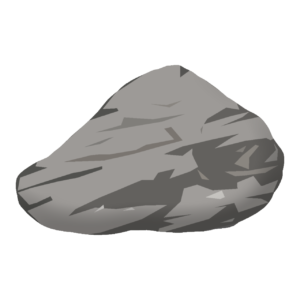The Downlink • May 20, 2022
A little too close for comfort
Space Snapshot

Astronomers from a global research team have released the first image ever captured of the supermassive black hole at the center of the Milky Way galaxy. The group used observations from a worldwide network of radio telescopes to directly image the object whose existence had previously only been inferred based on the movement of stars around it. The image shows the light of glowing gas being bent by the powerful gravity of the black hole at the center. While the black hole itself is about four million times more massive than our Sun, the ring of light around it is surprisingly tight — it’s only about the size of Mercury’s orbit around the Sun. Image credit: Event Horizon Telescope Collaboration.
You love space, now take action
This weekly newsletter is your toolkit to learn more about space, share information with your friends and family and take direct action to support exploration. Anyone can subscribe at planetary.org/connect to receive it as a weekly email.
Mission Briefings


A piece of the asteroid that killed the dinosaurs may have been found. Paleontologists at a fossil site in North Dakota may have found fossils from animals that died within an hour of the asteroid’s strike, buried alive by sediment that had been rapidly displaced by the impact. They also found crystallized pieces of rock that they think were ejected from the impact crater, including one fragment that had been encased in amber (pictured) after landing in tree sap. This particular fragment was preserved by the amber, allowing scientists to analyze its composition and determine that it was of cosmic origin. The team hopes that further analysis may reveal what the asteroid was made from and where in the solar system it came from. Image credit: NASA Goddard.

China's Zhurong rover may have found evidence of a wetter Mars. The spacecraft analyzed material at its landing site in Utopia Planitia, a large plain in Mars' northern hemisphere, and may have found signs that the area contained liquid water during a time when many scientists believed Mars was dry and cold. The findings suggest that liquid water may have existed on Mars more recently than expected.
From The Planetary Society


There may be millions of asteroids out there, but does that mean we’re doomed just like the dinosaurs? Take a look at the actual risk that asteroids and other near-Earth objects pose, when you need to worry, and when you don’t. Plus, watch our newest video that breaks down the five steps we can take to avoid a planetary disaster: find, track, characterize, deflect, and coordinate and educate. Pictured: An artist’s impression of an asteroid approaching Earth. Image credit: Ray Cassel.

We’re not just preserving life on this planet; we’re looking elsewhere for it too! One of the big questions facing researchers involved in the search for life beyond Earth is how we’ll recognize alien life if we do find it, since all we currently know is Earth-like life. Planetary Society board member and Cornell University planetary scientist Britney Schmidt joins this week’s Planetary Radio to talk about this challenge and share some insights into how researchers like her address it — including with a sub-ice exploring robotic submarine.

A huge asteroid is coming near Earth in seven years — and we’re getting ready for it. The 400-meter asteroid Apophis will fly by Earth in 2029, coming closer than our geostationary satellites. Scientists are sure that it won’t hit the Earth, but it will provide an unparalleled opportunity to study an asteroid and to raise public awareness about the asteroid threat. The Planetary Society participated in a conference last week to plan for this event and prepare to make the most of it.

Thank you for helping us exceed our member drive goal! We soared past our goal of 500 new members, reaching a whopping 752! Welcome to all our new members, and thank you to everyone who helped make this possible. If you haven’t joined yet, consider becoming a member today. Membership starts at just $4/month.
What's Up

Venus is super bright in the predawn eastern sky, and the Moon comes closer and closer to it over the coming days. Jupiter and Mars are also approaching one another, with Saturn shining yellowish nearby. Learn more at planetary.org/night-sky.
Share your artwork with us!
We love to feature space artwork in the Downlink. If you create any kind of space-related art, we invite you to send it to us by replying to any Downlink email or writing to [email protected]. Please let us know in your email if you’re a Planetary Society member!


 Explore Worlds
Explore Worlds Find Life
Find Life Defend Earth
Defend Earth



